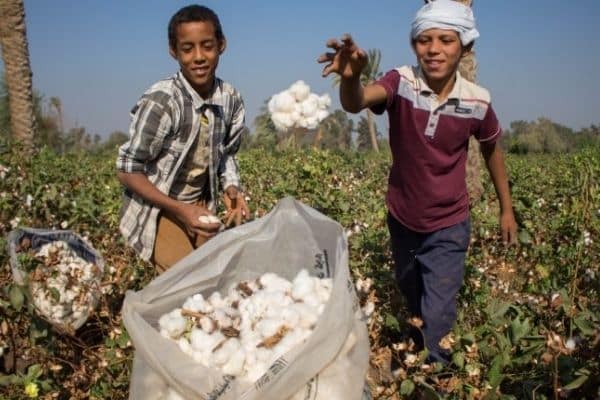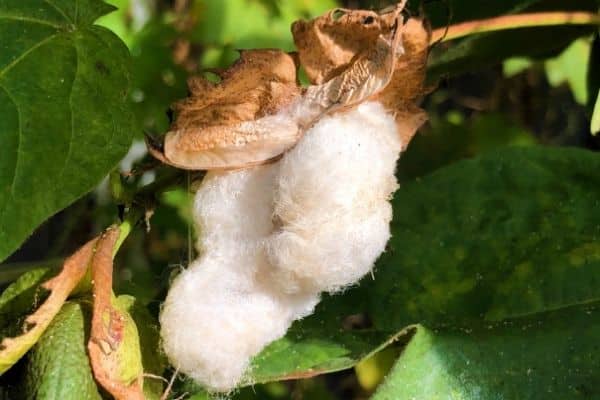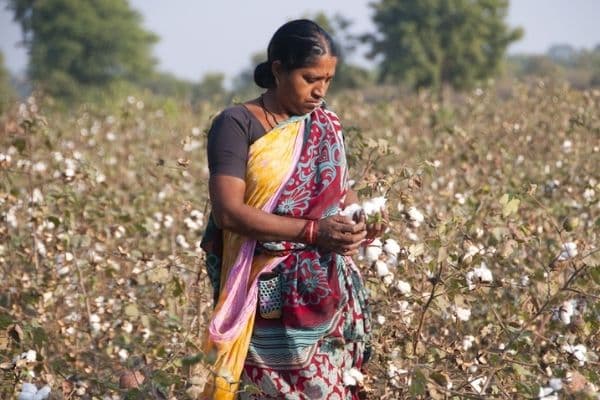Cotton is called the king of fibre. In this context, we will know about the classification of cotton in a detailed discussion.
Table of Contents
Cotton is a soft, fluffy, vegetable staple fibre. It grows in a ball around the seeds of the cotton plant. It combines strength with good absorbency. That’s why it’s used to produce durable and comfortable fabric and apparel.
History Of Cotton:
Humans learned to cultivate, produce and utilize cotton more than 5000 BC in the Middle East and India. Textile manufacturing spread out to Europe after Alexander the Great’s invasion of India. But in different places, cotton is used in different names.
The English word cotton is derived from the Arabic word ‘Khatan’. From the Arabic word, the name originally was given to flax. Cotton is called by versatile names all around the world. Such as:
Different Names of Cotton
- Arabic countries – katan, gatu, kotan, kutn, gutn, or kuteen.
- Russia – khlopok
- China – hoa main
- Japan – vatta ik or vatta noki
- France – coton
- Greece – vamvax
- Italy – cotone
- Germany – baumwolle
- Poland – bawełna
- Iran – pembeh or poombch
- India – pucu
In the 18th century, modern cotton production began in England. After that, cotton rapidly spread throughout the United States. Today it has a vast production and contribution to international trade. Today, Cotton is called the backbone of the world’s textile industry.
In the 20th century, cotton was considered the most important textile fibre. Cause it has excellent fibrous properties to produce a major fibre and fabric for textile applications. Therefore, it is important for every textile profession-related person to know about the Classification of cotton. So, Let’s jump into our topic:
What is Classification of cotton Fibre?
i. Classification of Cotton according to the Basis of Region:
We can classify cotton according to the basis of region. You can see the global organic cotton fiber classification mapping Picture.

a) Sea Island Cotton:
Sea Island Cotton is the most valuable commercial cotton. It comes originally from Barbados. It is a long, fine, soft, and silky natural fibre.

Properties of Sea Island Cotton are:
- Length: The avg. length of these fibres is about 2 inches (51mm)
- Diameter: 1/1500 Inc (01.17mm)
- Specific Gravity: 1.5 gmcm3
- Very good Luster, Uniformly, maturity twist, and softness.
This cotton is in length or twist. The color is off it is a light creamy tint. The staple length is near 5 cm. Sea Island cotton grows especially on the coast area, where the climates are favourable. Especially the Gulf of Florida, Barbados, and other adjacent Islands.
b) Egyptian Cotton:
Egyptian Cotton fibres are long, fine, soft, and silky, similar to Sea Island cotton, with slightly inferior qualities. Egyptian cotton is available in Middle East countries, especially in Egypt. There are two kinds of Egyptian cotton: a.brown Egyptian cotton and b. white Egyptian cotton. The staple length of these cotton fibre is between 3.7-4.5 cm.

Properties of Egyptian Cotton:
- Length: 1.5-1.75 inch (38-44mm)
- Very good infirmity
- It contains a few immature and dead fibers.
- The diameter is 1/1500inch (01.017 mm)
- Specific Gravity: 1.5 gm/cm3
Over 3 centuries, Egyptian cotton has established a reputation of being the best cotton in the world. Egyptian cotton has been the world’s finest cotton because of its softness, strength, and superior characteristics.
c) South American Cotton:
South American cotton is grown in the south of North America. The staple length of South American cotton fiber is between 2.5 to 3.5 cm.

Properties of South American Cotton:
- Staple Length is 1-1.5 (25-38mm).
- Diameter of 1/1300 inch.
- It is very suitable for using others regenerated fibers.
South American cotton has been cultivated in major textile-producing countries, like Brazil, Colombia, Peru, etc. Peru is one of the biggest South American clothing exporters using south American cotton resources.
d) American Upland Cotton:
This variety is from Gossypium Hirsutum is generally known as upland cotton. Most American cotton belongs to this group. The staple length of American Pima cotton is from 9/8 to 3/2 inches (27-36mm) and the fibre is fine, strong, lustrous, silky, and creamy-brown in color.
Bangladesh Cotton: Mainly American cotton is produced in Bangladesh. The quality of Bangladeshi cotton is improving now. It is possible to produce a minimum 60 Ne yarn from this cotton.

Basically, American upland cotton is used for sewing thread. However, a small amount of it is used in the high-quality broad fabric. Fabrics made from American cotton are silky, smoothness, softness, and lustre are desired.
e) Indian Cotton:

Indian Cotton is produced and available in India. Generally, Indian cotton is poorly graded, with lower staples and coarser diameters. This cotton is generally white in color. It has short fibre; length is 0.6- 0.8 inches. It is only suitable for producing coarse yarn.
f) China Cotton:
It is generally available in China only. China cotton is the lowest-grade commercial cotton. Length is 0.5-0.7 inches. Natural twist (convolution) is not highly developed and rather harsh.

You may have a clear idea of the classification of cotton fibre of China cotton from the following table. Let’s have a look at the cotton classification chart.
| Origins of Cotton | Fiber Length | Diameter (mm) | Micronaire (MIC) | Spinning Limit (Ne) |
| Sea-Land Cotton | 49-50 | 0.016 | 3.0-3.2 | 200 |
| Egyptian | 38-44 | 0.017 | 3.0-3.2 | 200 |
| American Cotton | 25.4-38 | 0.018 | 3.2-3.5 | 70 |
| CIS | 25.4-33 | 0.020 | 3.4-3.8 | 70 |
| Indian Cotton | 20-5.30 | 0.021 | 3.5-4.5 | 40 |
| China | 20.5-28 | 0.021 | 3.5-4.5 | Coarse |
| Pakistan | 15.5-25.4 | 0.021 | 4-4.8 | Course |
The quality of this cotton is the poorest. Therefore, it should not be used for the finest quality of fabrics. The staple length is 1.5-2cm only.

ii. Scientific Classification of Cotton Fibre
The scientific Name of Cotton is Gossypium herbaceum.
| Scientific Classification of Cotton | |
| Kingdom | Plantae |
| Division | Magnoliophyta |
| Class | Magnoliophyta |
| Order | Malvales |
| Family | Malvaceae – mallow family |
| Genus | Gossypim |
| Species | G. Hirsutum/ G. arboretum L. |
iii. Classification of Cotton according to the Species
Cotton Fibres belong to the botanical genus ‘Gossypium’. It’s classified in the following names as per the places of cultivation:
- Gossypium Hirsutum: Upland Cotton, Native to Central America and Mexico.
- Gossypium Barbadense: Pima Cotton, Native tropical South America
- Gossypium Arboreum: Tree cotton, native India and Pakistan.
- Gossypium Herbaceum: Levant cotton, native to Southern Africa & the Arabian peninsula.
iv. Types of Cotton fibre on the basis of length:
According to length, cotton is classified as follows:
- Short Staple Cotton Fiber: 10 mm to 24 mm in length
- Medium Staple Cotton Fiber: 25 mm to 28.6 mm in length
- Long Staple Cotton Fiber: 30 mm to 63.5 mm in length
v. Classification of cotton fiber based on Length Uniformity
The mean length and the upper half mean length of the fibres expressed as a percentage is called Length uniformity.
| Degree of Uniformity | HVI Length Uniformity Index (%) |
| Very High | Above 85 |
| High | 83 – 85 |
| Intermediate | 80 – 82 |
| Low | 77 – 79 |
| Very Low | Below 77 |
If all of the cotton fibers in the bale are of the same length. Then it indicates the length. And the upper half mean length will be the same. Then, the uniformity index would be 100.
However, length uniformity will always be less than a hundred. Cause there is always a natural variation in the length of fibres. Length uniformity indicates the quality of fibre. It can affect yarn evenness, strength, and the efficiency of the spinning process.
Length uniformity is also related to short fibre content. Cotton Fiber with a low uniformity index is likely to have a high percentage of short fibres. In this term, cotton may be difficult to process and is likely to produce low-quality yarn.
The following table is a guide for interpreting Cotton length uniformity measurements.
vi. Classification of cotton fiber based on Fiber Strength
Strength measurements are indicated in terms of grams per tex. A tex unit is equal to the weight in grams of thousand meters of cotton fibre. Consequently, the strength relates is the force in grams. That is required to break a bundle of cotton fibres one tex unit in size.

Usually, cotton Fiber strength is primarily determined by variety. It could be affected by plant nutrient deficiencies and weather. There is a high relationship between fiber strength and yarn strength. As well as cotton with high fibre strength is more able to withstand breakage during the fabric manufacturing process.
The following table could be used to guide cotton fibre strength measurements.
| Degree of Strength | HVI Strength (grams per tex) |
| Very Strong | 31 & above |
| Strong | 29 – 30 |
| Average | 26 – 28 |
| Intermediate | 24 – 25 |
| Weak | 23 & below |
vi. Classification of cotton fiber based on Micronaire or MIC Value
Cotton Micronaire is the measurement of cotton fiber fineness and maturity. The airflow instrument could be used to measure the air permeability of a constant mass of compressed fibres. It is known as MIC value in short
It’s influenced during the growing period by environmental conditions. Like moisture, sunlight, temperature, plant nutrients, and extremes in the plant. Cotton fiber fineness affects processing on performance. And its effect on the quality of the end product in several ways.
In the opening, cleaning, carding, and yarn manufacturing processes, low micronaire. Fine-fiber cotton requires slower processing speeds to prevent damage to the cotton fibers.
Yarns produce from finer fiber cotton result in more fibres per cross-section. In turn, produces stronger yarns. Dye absorbency and retention vary with the maturity of cotton fibers. The greater the maturity, the better the absorbency and retention.
The visual chart could use as a guide in interpreting micronaire measurements below. Relationship of micronaire readings to market value:

vii. Types of Cotton Fibre on the basis of Trade Name:
- Blue cotton: Maximum White cotton.
- Bump Cotton: Waste or bale’s damp cotton.
- Bloom cotton: Light color cotton.
- Buttery Cotton: Light Brown Cotton.
- Curly cotton: Very wet gin cotton.
- Cut Staple Cotton: Saw gin cut the cotton.
- Green Cotton: Early in the year, collected immature wet collected cotton.
- Meaty Cotton: The cotton which contains maximum short immature fiber.
- Classy Cotton: Top Graded Cotton.
- Mossy Cotton: it means meaty cotton.
Additional Abbreviation name of Cotton Fibre
- Noisy Cotton: This cotton has noisiness.
- Pearly Cotton: Wet cotton which has a small amount of fuzz.
- Perfection Cotton: Dry ginned cotton.
- Polished Cotton: Wet ginning and pickling cotton.
- Quickness Cotton: Collected mature cotton.
- Smooth Cotton: Mature dry cotton.
- Soft Cotton: Cotton that contains a lot of fine hair.
- Springtime Cotton: Collected at an early stage of production.
- Spun Cotton: Collected after spinning.
- Sweetheart Cotton: Yellowish-green cotton.
- Swelling Cotton: When cotton swells up when squeezed.
- Transparent Cotton: Cotton containing less lint.
- White Cotton: No color cotton.
- Yellow Cotton: Colored cotton.
- Zephyr Cotton: Wind-dried cotton.
- Abrasive Cotton: Long-staple cotton.
- Bounce Cotton: Short staple cotton.
Classifications According to Color of Cotton Fibre
- Black Cotton: Black colored cotton.
- Blue Cotton: Blue colored cotton.
- Brown Cotton: Brown colored cotton.
- Buffalo Cotton: Buffalo colored cotton.
- Butter Cotton: Butter colored cotton.
- Burnet Cotton: Burnet colored cotton.
- Canary Cotton: Canary colored cotton.
- Cardinal Cotton: Cardinal colored cotton.
- Castor Oil Cotton: Castor oil colored cotton.
- Cheesecloth Cotton: Cheese cloth colored cotton.
- Chocolate Cotton: Chocolate colored cotton.
- Cinnamon Cotton: Cinnamon colored cotton.
- Clear Cotton: Clear colored cotton.
- Clover Leaf Cotton: Clover leaf colored cotton.
- Colonel Cotton: Colonel colored cotton.
- Columbine Cotton: Columbine colored cotton.
- Cornflower Cotton: Corn flower colored cotton.
- Cowhide Cotton: Cow hide colored cotton.
- Dark Cotton: Dark colored cotton.
- Deep Purple Cotton: Deep purple colored cotton.
- Dusky Cotton: Dusky colored cotton.
- Egyptian Cotton: Egyptian colored cotton.
- Egret Cotton: Egret colored cotton.
- Emerald Cotton: Emerald colored cotton.
- Fawn Cotton: Fawn colored cotton.
- Firebird Cotton: Fire bird colored cotton.
- Flame Cotton: Flame colored cotton.
- Gold Dust Cotton: Gold dust colored cotton.
- Golden Cotton: Golden colored cotton.
- Honey Dew Cotton: Honey dew colored cotton.
- Indigo Cotton: Indigo colored cotton.
References:
- Fundamentals of Spun Yarn Technology by Carl A. Lawrence
- The Classification of Cotton by Cotton Division. Agricultural Marketing Service, United States Department of Agriculture.
- https://www.cottoninc.com/cotton-production/quality/classification-of-cotton/classification-of-upland-cotton/
- https://printersblankets.com/wp-content/uploads/2019/10/Cotton-Missouri-minutes.pdf
- https://en.wikipedia.org/wiki/Cotton
